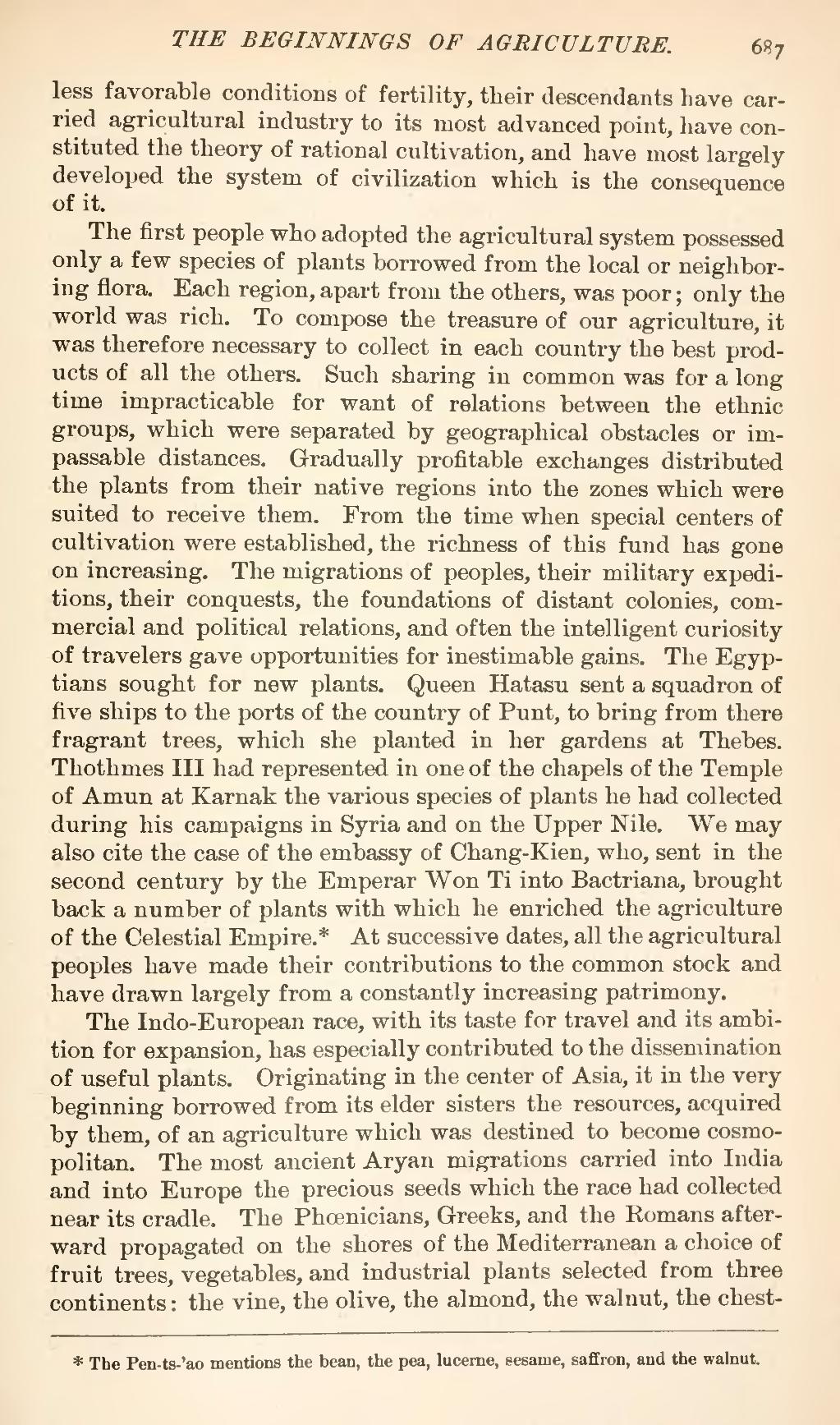less favorable conditions of fertility, their descendants have carried agricultural industry to its most advanced point, have constituted the theory of rational cultivation, and have most largely developed the system of civilization which is the consequence of it.
The first people who adopted the agricultural system possessed only a few species of plants borrowed from the local or neighboring flora. Each region, apart from the others, was poor; only the world was rich. To compose the treasure of our agriculture, it was therefore necessary to collect in each country the best products of all the others. Such sharing in common was for a long time impracticable for want of relations between the ethnic groups, which were separated by geographical obstacles or impassable distances. Gradually profitable exchanges distributed the plants from their native regions into the zones which were suited to receive them. From the time when special centers of cultivation were established, the richness of this fund has gone on increasing. The migrations of peoples, their military expeditions, their conquests, the foundations of distant colonies, commercial and political relations, and often the intelligent curiosity of travelers gave opportunities for inestimable gains. The Egyptians sought for new plants. Queen Hatasu sent a squadron of five ships to the ports of the country of Punt, to bring from there fragrant trees, which she planted in her gardens at Thebes. Thothmes III had represented in one of the chapels of the Temple of Amun at Karnak the various species of plants he had collected during his campaigns in Syria and on the Upper Nile. We may also cite the case of the embassy of Chang-Kien, who, sent in the second century by the Emperar Won Ti into Bactriana, brought back a number of plants with which he enriched the agriculture of the Celestial Empire.[1] At successive dates, all the agricultural peoples have made their contributions to the common stock and have drawn largely from a constantly increasing patrimony.
The Indo-European race, with its taste for travel and its ambition for expansion, has especially contributed to the dissemination of useful plants. Originating in the center of Asia, it in the very beginning borrowed from its elder sisters the resources, acquired by them, of an agriculture which was destined to become cosmopolitan. The most ancient Aryan migrations carried into India and into Europe the precious seeds which the race had collected near its cradle. The Phœnicians, Greeks, and the Romans afterward propagated on the shores of the Mediterranean a choice of fruit trees, vegetables, and industrial plants selected from three continents: the vine, the olive, the almond, the walnut, the chest-
- ↑ The Pen-ts-'ao mentions the bean, the pea, lucerne, sesame, saffron, and the walnut.
